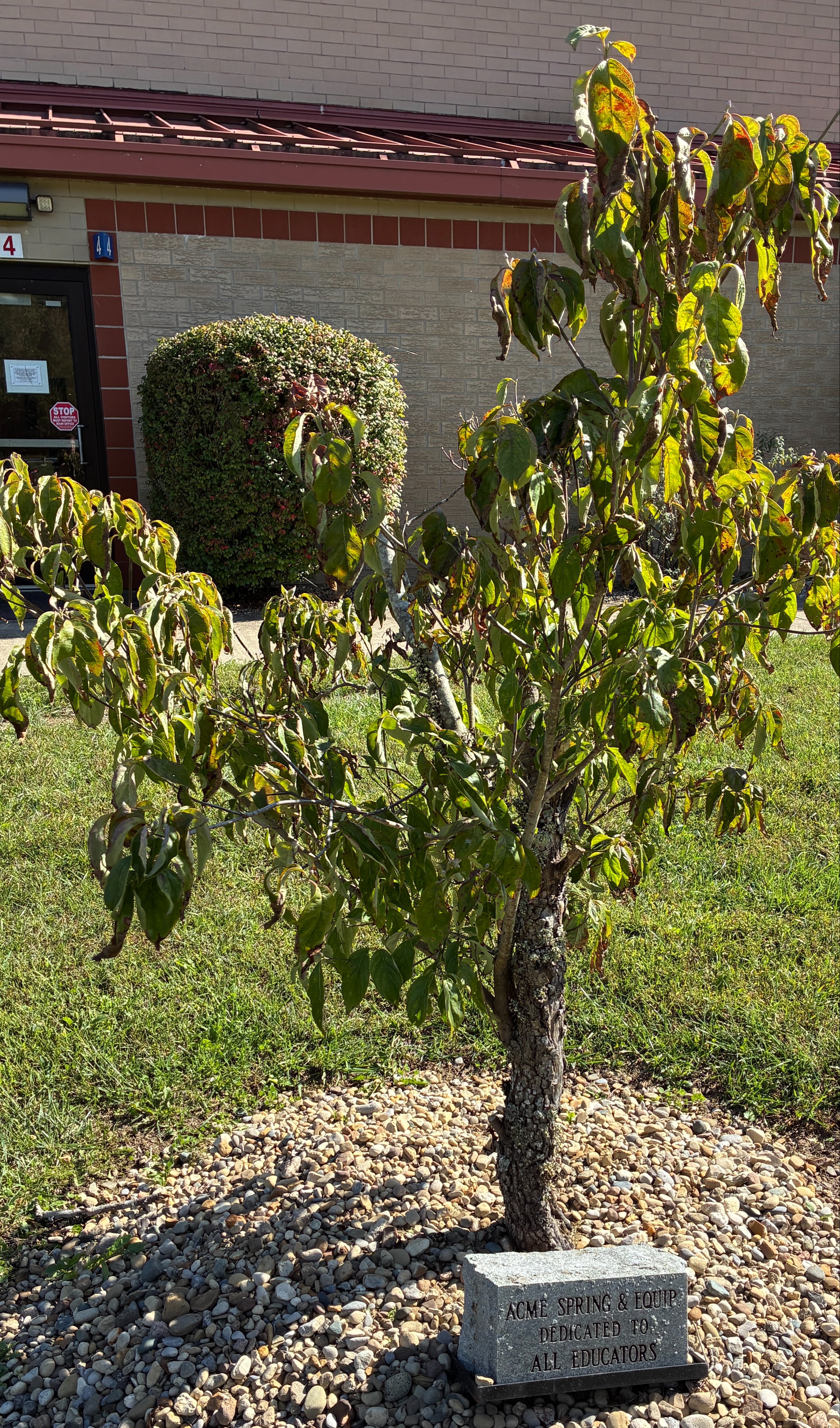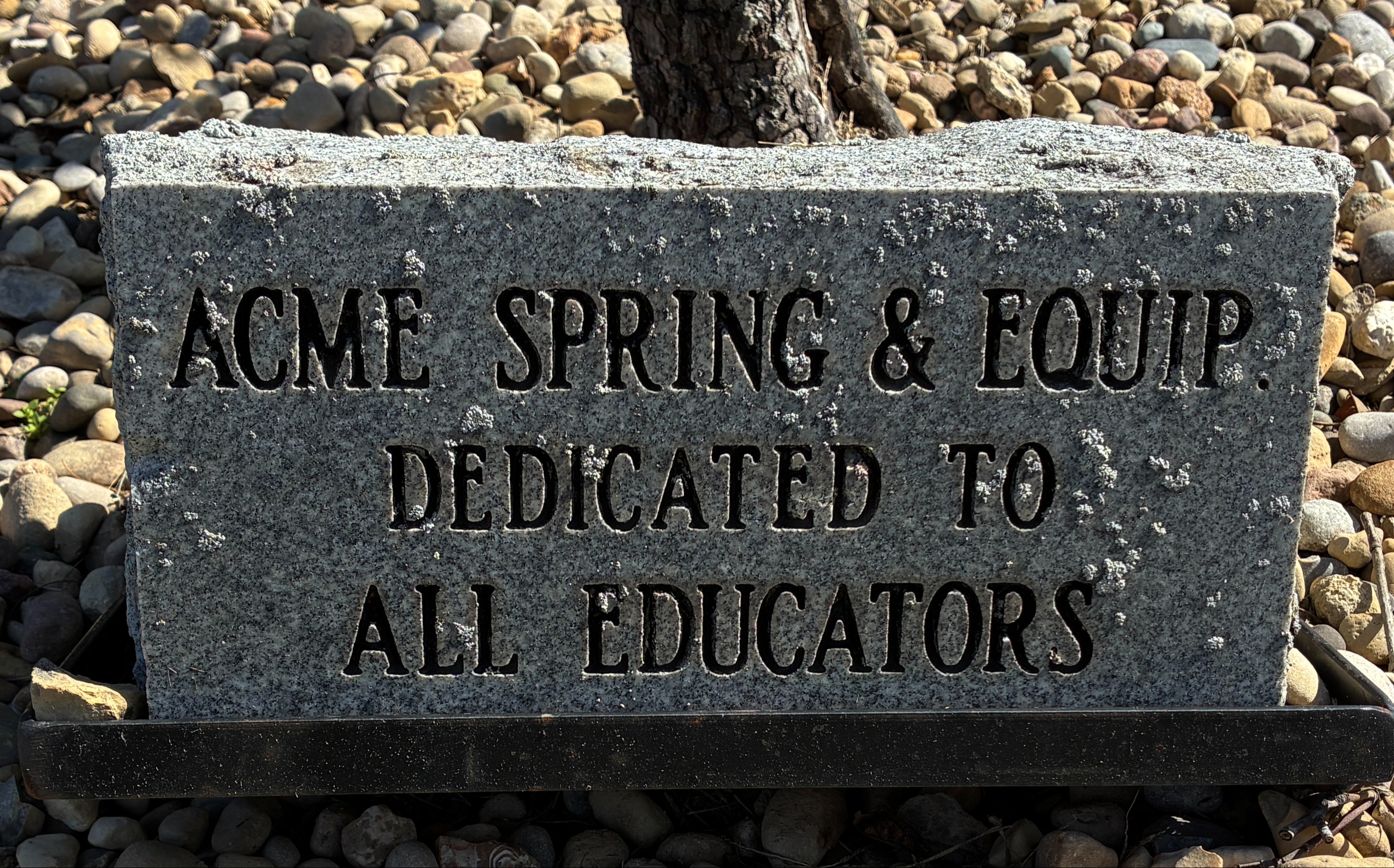
Photo Credits: Dr. Loretta W. Harvey
Scientific Name: Cornus florida
Common Name: Flowering Dogwood
Type: Deciduous
Family: Cornaceae (Dogwood family)
Native Range: Eastern North America
USDA Zone: 5-9
Height: 15-30 feet
Spread: 20-35 feet, often wider than it is tall
Bloom Time: Early to Mid-Spring
Bloom Description: The true flowers are small, yellowish-green, and inconspicuous, clustered in the center. The showy, ornamental "petals" are actually four white modified leaves called bracts, notched at the tip.
Sun: Partial shade is ideal, but tolerates full sun with adequate moisture.
Water: Medium, prefers moist, well-drained, acidic soil. Requires regular watering, especially when young.
Maintenance: Requires minimal pruning; prune only to remove dead or diseased wood, or to maintain a desirable shape. Needs monitoring for pests and diseases.
Leaf Type/Shape: Simple, opposite, ovate (egg-shaped) with smooth margins and arcuate (arching) veins. Turn a beautiful red or reddish-purple in the fall.
Attracts: Birds (robins, cardinals, etc.) who feed on the red berries; Pollinators (bees//flies) to the true flowers.
Other Info: A beautiful, small tree with a low-branching, tiered, often horizontal habit that provides excellent year-round interest. The iconic spring display is unmatched, making it one of the most popular native ornamental trees in eastern North America.
Tolerate: Clay soil, some drought (once established)
Invasive: No
Climate: Thrives in a temperate climate with moderate rainfall. It prefers cool, moist springs and warm, humid summers, and requires a cold winter dormancy period. It is sensitive to sudden temperature fluctuations and extreme heat/drought, especially when young or planted in full sun. Stressed by heat and drought when planted in full sun or poor soil.
Noteworthy Characteristics: The foliage provides one of the most reliable and brilliant red to reddish-purple fall color displays. Small, glossy red drupes (berries) mature in late summer and fall, adding a festive touch and serving as a vital food source for birds. Offers spring bloom, summer shade, outstanding fall color, and a distinctive winter silhouette.
Problems: Dogwood Anthracnose- A severe fungal disease that can be lethal, particularly in wet, cool springs and dense shade. Powdery Mildew- Common fungal issue that creates a white, powdery coating on leaves, mainly an aesthetic problem but can weaken the tree. Borers (Dogwood borer)- Larvae bore into the trunk and branches, causing dieback and potential death, especially in stressed or damaged trees.
Economic Uses: Ornamental/Horticultural- Its primary use is as a highly valued landscape and street tree for its stunning four-season interest, making it a staple in yards, parks, and arboreta. Wildlife Habitat- Critical food source (berries) and cover for various bird and mammal species. Wood-Historically, the wood is extremely hard, heavy, and fine-grained. It was used for things requiring durability and resistance to wear, such as tool handles, golf club heads (persimmon wood is a relative), and weaving shuttles. This use is rare today due to the tree's size and value as an ornamental. Tannin/Dye- Bark contains tannins used for curing leather and historically for making a scarlet dye.
Donated by: Acme Spring & Equipment
Dedicated to: All Educators
Arboretum Catalog Number: 0009
Photo Credits: Dr. Loretta W. Harvey

